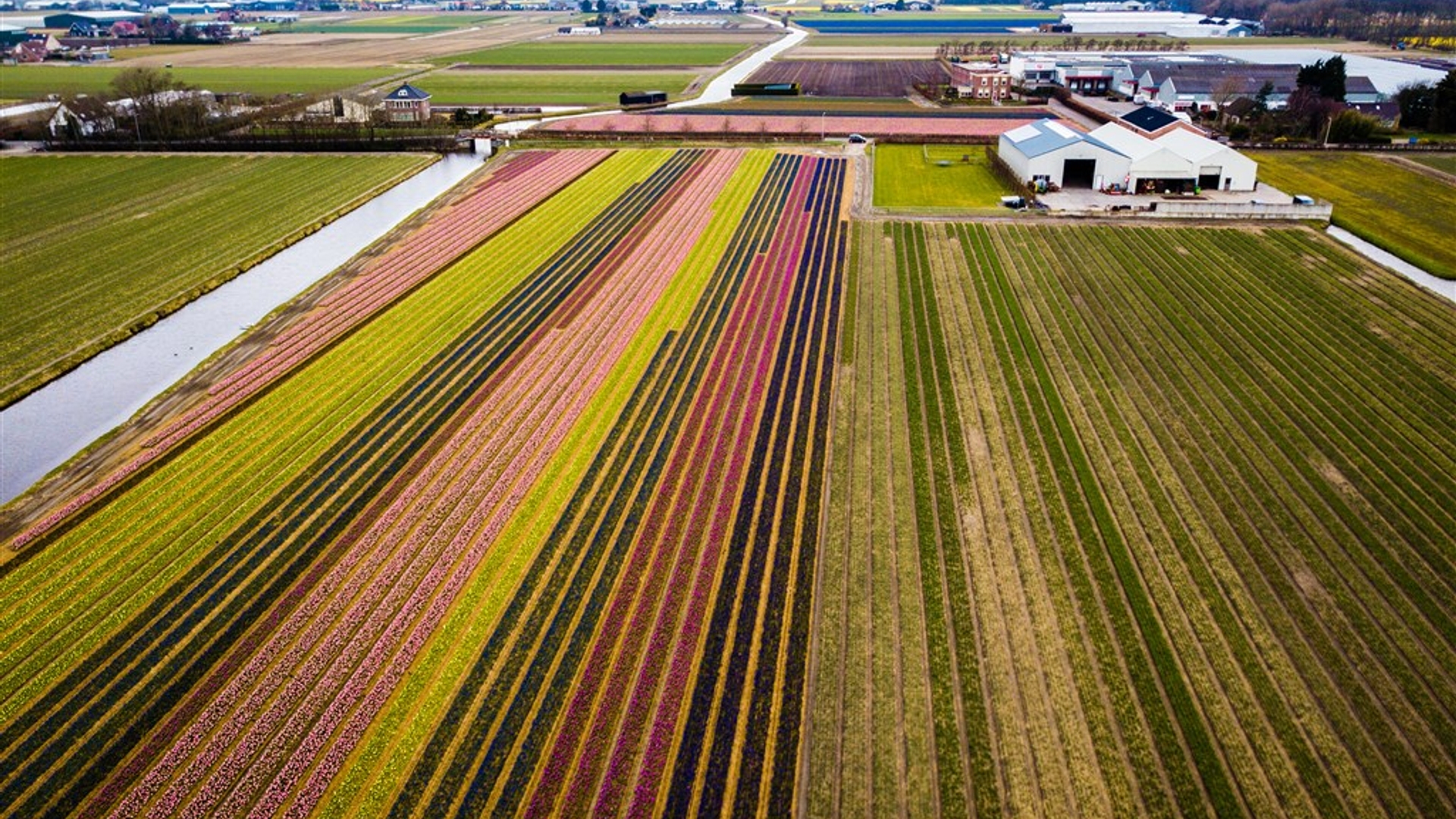Onafhankelijke onderzoeksjournalistiek
Local Residents of Bulb Fields in The Netherlands Suffer Greater Exposure to Pesticides
08-03-2019
• leestijd 3 minuten
•
701 keer bekeken
• 
For the first time in The Netherlands, evidence shows that people who reside in close proximity to flower bulb fields like tulips and lilies were exposed to a higher concentration of pesticides, previously unknown, than those who live farther away. Pesticides have even been found in the diapers of babies living within 250 meters of the fields. This came out in the report ‘Research on exposure of residents to pesticides in the Netherlands’, conducted on behalf of the Dutch Ministry of Infrastructure and Public Works and the Ministry of Economic Affairs.
The Dutch investigative TV program ZEMBLA reveals the research results. The report shows that residents’ exposure takes place inside their homes as well as outdoors, and that this exposure is increased throughout the year. Professor Martin Van den Berg, toxicologist from the University of Utrecht, says that on the basis of this research, “[Pesticides] shouldn’t be sprayed within a few hundred meters of residential areas where small children live.”
Pesticides in Diapers
“Our most important conclusion is that we found higher concentrations of pesticides in air and house dust within 250 meters from bulb fields than in our control [groups that live farther away- ed. ],” according to principal investigator Professor Roel Vermeulen. Concentrations of pesticides are also found in the urine of adults and diapers of babies. Small children are especially vulnerable to the health effects of pesticides.
“Our most important conclusion is that we found higher concentrations of pesticides in air and house dust within 250 meters from bulb fields than in our control [groups that live farther away- ed. ],” according to principal investigator Professor Roel Vermeulen. Concentrations of pesticides are also found in the urine of adults and diapers of babies. Small children are especially vulnerable to the health effects of pesticides.
The research demonstrates a statistical relationship between pesticide levels found in the air and urine. In other words: The higher the amount of pesticides sprayed, the higher the amount detected in urine. Local residents of the tulip and lily fields are chronically exposed to pesticides, and even days after being sprayed, the chemicals appear to volatilize from the fields.
Principal investigator Professor Roel Vermeulen:
Health Risks still unknown
The three year long research doesn’t address how damaging these concentrations exactly are. “The important question now is: what does this mean, exactly, for the health of the people living there?” says Professor Martin Van den Berg. The toxicologist examined the results of the research for ZEMBLA. Vermeulen also confirmes that there is need for further investigation: “It’s true that small children are more vulnerable to hazardous chemicals in the environment. We’ll need to take a good and specific look at this.”
The three year long research doesn’t address how damaging these concentrations exactly are. “The important question now is: what does this mean, exactly, for the health of the people living there?” says Professor Martin Van den Berg. The toxicologist examined the results of the research for ZEMBLA. Vermeulen also confirmes that there is need for further investigation: “It’s true that small children are more vulnerable to hazardous chemicals in the environment. We’ll need to take a good and specific look at this.”
In the meantime, Van den Berg has called upon the government to apply what’s known as the precautionary principle: “When you’re not certain of the amount of toxins you’re being exposed to, and you can’t rule out whether or not it’s damaging, you choose the safest path, and that in this case is: make sure you’re being less exposed.”
Professor Martin Van den Berg:
Unique Research
The research combines different measurements and calculation models, where, for the first time, highly meticulous measurements could be made showing to what degree people who live close to agrarian fields have been exposed to pesticides. Researchers looked to concentrations found in urine, indoor air, house dust, and the lawns of local residents living in the vicinity of bulb fields. “This research is unique, in that you can see over a longer period of time and over a greater distance, one still finds elevated levels of pesticides”, according to Van den Berg.
The research combines different measurements and calculation models, where, for the first time, highly meticulous measurements could be made showing to what degree people who live close to agrarian fields have been exposed to pesticides. Researchers looked to concentrations found in urine, indoor air, house dust, and the lawns of local residents living in the vicinity of bulb fields. “This research is unique, in that you can see over a longer period of time and over a greater distance, one still finds elevated levels of pesticides”, according to Van den Berg.
Professor Martin Van den Berg:
ZEMBLA initiates exposure research
The National Institute of Public Health and Environment (RIVM) states, that in the Netherlands, approximately 2.2 million people live within 250 meters of agrarian fields. Many crop protection products are used on agricultural lands. For tulip and lily high amount of pesticides are sprayed per hectare. In 2016, approximately 5.7 million kilograms of crop protection products were used in the Netherlands.
The National Institute of Public Health and Environment (RIVM) states, that in the Netherlands, approximately 2.2 million people live within 250 meters of agrarian fields. Many crop protection products are used on agricultural lands. For tulip and lily high amount of pesticides are sprayed per hectare. In 2016, approximately 5.7 million kilograms of crop protection products were used in the Netherlands.
ZEMBLA showed in 2011 and 2013 that the degree to which local residents were being exposed to these products was completely unknown. It also appears that the government took no measures to protect these residents. The final report from ‘Research on exposure of residents to pesticides in the Netherlands’ is expected to be presented to the government ministries concerned in April of 2019.
Praat mee
0/1500
Altijd op de hoogte blijven van het laatste nieuws?
Schrijf je in voor de Zembla-nieuwsbrief en blijf op de hoogte van onze onthullende journalistiek.
